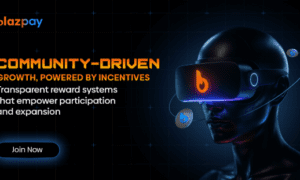Technology has become an indispensable tool for bridging educational gaps and fostering growth in the evolving landscape of education. This article will explore how educators leverage technology to meet diverse learning needs. It delves into how digital tools can customize learning experiences, enhance student engagement, and promote inclusive education. By highlighting real-world examples and providing practical advice, Sunila Dang aims to empower educators to harness the full potential of tech in their classrooms.
Personalized Learning With EdTech
One of the most significant benefits of using technology in the classroom is the ability to tailor learning experiences to individual students. This approach, known as personalized learning, recognizes that not all students learn at the same pace or in the same way. Educational technology, or EdTech, allows educators to customize lessons to meet the unique needs of each student.
Adaptive learning platforms are one example of how technology personalizes education. These platforms use data and algorithms to adjust the difficulty of assignments and provide real-time feedback to students. Adaptive learning technology helps struggling students catch up by adapting to each student’s progress and provides more advanced content to those ready for it.
Assistive Technology For Special Needs
Technology is playing a significant role in supporting students with special needs. Assistive technology includes devices, software, and applications that assist individuals with disabilities in learning and daily activities. These tools empower students to overcome barriers and succeed in the classroom.
For example, screen readers can read aloud text for students with visual impairments. Speech recognition software helps students with limited mobility communicate and complete assignments. There are also specialized apps that help students with dyslexia improve their reading and writing skills. Assistive technology ensures every student has an equal opportunity to learn and grow.
Interactive Learning Tools
Interactive learning tools make education more engaging and enjoyable for students. These technologies transform traditional teaching methods, from interactive whiteboards to educational games. Interactive whiteboards allow teachers to display lessons and encourage students to interact with the content. This makes learning more fun and helps students grasp complex concepts more effectively.
Educational games, often called “edutainment,” combine learning with entertainment. These games can teach math, science, and various other subjects in a way that captivates students’ attention. They motivate students to learn through exploration and problem-solving, turning the learning process into an exciting adventure.
Virtual Field Trips
In the past, field trips required a lot of planning, funding, and logistics. Now, with the help of technology, educators can take their students on virtual field trips. Virtual field trips use videos, 360-degree photos, and interactive websites to transport students to different places and times without leaving the classroom.
These virtual experiences can bring history, science, and other subjects to life. Students can explore the pyramids of Egypt, dive into the ocean’s depths, or visit a historic battlefield, all from the comfort of their classroom. Virtual field trips make learning more immersive and memorable.
Digital Assessments
Assessment is a critical component of education, and technology has greatly improved how educators evaluate student progress. Traditional paper-and-pencil tests are being replaced with digital assessments. These assessments are more versatile and provide teachers with instant results and insights.
Online quizzes and exams are common examples of digital assessments. They can include various question types, such as multiple-choice, short-answer, and essay questions. Teachers can use analytics to identify areas where students struggle and adjust their teaching accordingly. Digital assessments offer a more comprehensive view of student performance and help educators track progress over time.
Online Collaboration
Technology has also transformed the way students collaborate with their peers. Online collaboration tools, such as Google Docs, Microsoft Teams, and various learning management systems, enable students to work together on projects and assignments, even if they’re not physically in the same location. These tools allow students to share documents, comment, and edit in real time. Collaborative work prepares students for the demands of the modern workforce and promotes teamwork and communication skills.
Challenges And Concerns
While technology offers numerous educational benefits, it also comes with challenges and concerns. One major concern is the potential for overreliance on technology, leading to a lack of critical thinking and problem-solving skills. Educators must balance using technology as a tool for learning and ensuring that students develop essential life skills.
Privacy and security are also important concerns. Student data collection by educational technology companies has raised questions about how that data is used and protected. Educators and schools must be diligent in safeguarding their students’ personal information.
The digital divide remains a significant challenge. Not all students have access to the same technology and resources. Schools and policymakers must continue working to bridge this gap and ensure all students have equal access to educational opportunities.
Final Thoughts
Sunila Dang says technology is revolutionizing education by catering to the diverse needs of students in the classroom. From personalized learning to assistive tools, flipped classrooms, virtual field trips, and digital assessments, technology is enhancing the learning experience. While there are challenges, such as the digital divide, educators are leveraging technology to promote growth and prepare students for success in the digital age, with ongoing advancements promising even more innovative teaching methods.



































